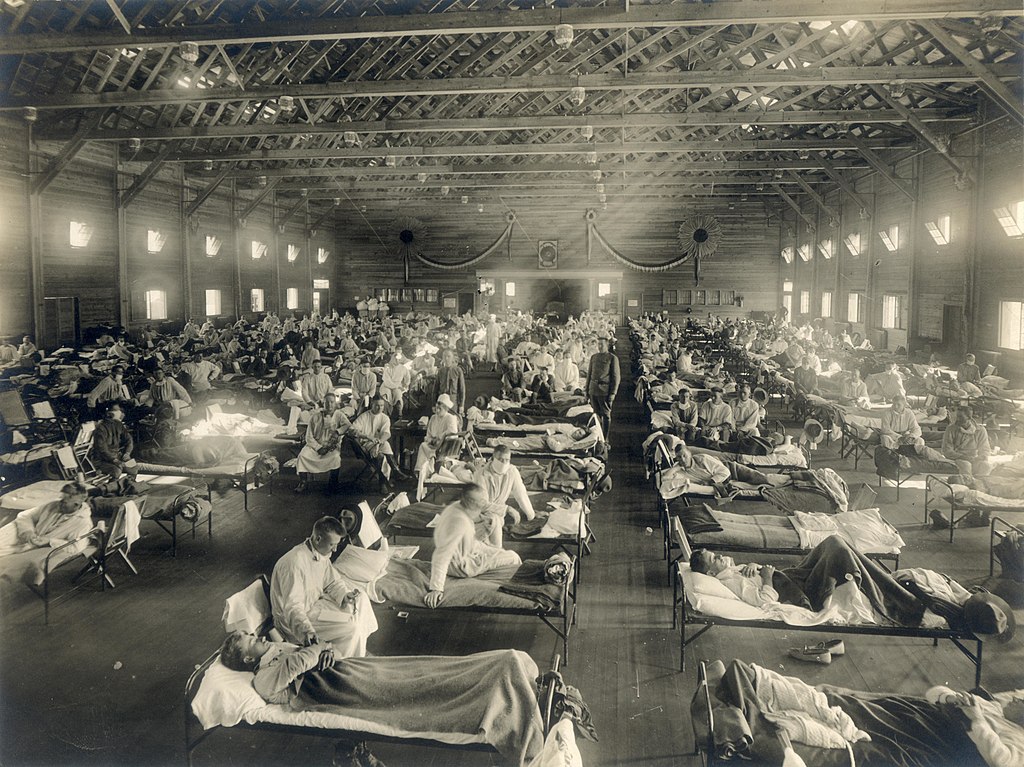
105 years ago, on this very day, the world was about to experience a catastrophic event that would shake the foundations of societies across the globe. The first cases of the Spanish Influenza in the United States were reported, marking the beginning of a pandemic that would go on to claim the lives of millions of people worldwide.

The Spanish Influenza, also known as the “1918 flu pandemic,” was a deadly virus that caused the most severe pandemic in recent history. The pandemic is believed to have originated from a military camp in Kansas, United States, and quickly spread to other parts of the world due to the movement of troops during World War I.
The virus got its name from Spain, as it was one of the first countries to report the outbreak due to its lack of wartime censorship. However, the virus was not limited to Spain, and it rapidly spread to other parts of Europe, Asia, Africa, and North America.
The Spanish Influenza was not like any other flu that people had experienced before. It was highly infectious and lethal, with a mortality rate of 2.5% and a tendency to target young, healthy individuals. The virus was so virulent that it killed people within hours or days of contracting it. Symptoms of the virus included fever, coughing, and severe respiratory distress.
As the virus continued to spread across the world, governments struggled to contain it. Many cities and countries implemented measures such as quarantine, social distancing, and mask mandates to slow the spread of the virus. However, these measures were often implemented too late, and the virus had already spread to a large number of people.

In its first 25 weeks, the Spanish Influenza is estimated to have killed up to 25 million people worldwide. By the end of the pandemic, the virus had infected over 500 million people, claiming the lives of approximately 50 million individuals. The pandemic was one of the deadliest natural disasters in human history, far surpassing the death toll of World War I.
The Spanish Influenza had a profound impact on the world. It created an overwhelming burden on healthcare systems and left many communities devastated. The virus also had significant social and economic impacts, as people were unable to work or travel due to illness or quarantine measures.
The Spanish Influenza also led to the development of modern public health policies and practices. The pandemic prompted governments to establish health organizations and protocols to better prepare for future outbreaks. It also paved the way for advancements in medical research and the development of vaccines, which have helped prevent future pandemics.

Today, the world is facing another pandemic, the COVID-19 pandemic, which has claimed millions of lives worldwide. The lessons learned from the Spanish Influenza have helped guide governments in their response to COVID-19. However, the COVID-19 pandemic has highlighted the importance of continued research and preparedness to prevent and mitigate the effects of future pandemics.
In conclusion, the Spanish Influenza was a catastrophic event in human history, claiming the lives of millions of people worldwide. Its impact on society and public health policies cannot be overstated. The lessons learned from the Spanish Influenza have helped shape the response to current pandemics and highlight the importance of preparedness to prevent future outbreaks.

Leave a Reply